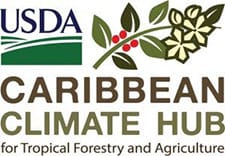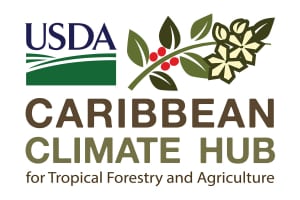Formalizing artisanal gold mining to mitigate environmental impacts: Lessons learned from Madre de Dios, Perú
Overview
Artisanal and small-scale gold mining activities (ASM) in tropical forests are expanding rapidly, fueled by soaring gold prices and improved road access. Despite the “artisanal’ label, the associated mining activities use toxic chemicals and heavy machinery. Thus, ASM is causing irreversible damage to the ecosystems, including deforestation, increased sedimentation in waterways, and mercury pollution of water and soil. In response, many governments are trying to ‘formalize’ ASM by registering concessions and creating gold mining zones. The environmental outcomes associated with formalization efforts in the tropics have seldom been analyzed systematically. Here we shared lessons from our research on changes in deforestation associated with formalization of AM in the Department of Madre de Dios (MD), in the Peruvian Amazon.
Author(s): Nora Álvarez-Berríos, Jessica L’Roe, and Lisa Naughton-Treves
Date: January, 2022
Source: International Institute for Tropical Forestry, Middlebury College, University of Wisconsin, Madison.
Citation: Álvarez-Berríos, L’Roe, and Naughton-Treves. 2022. Formalizing artisanal gold mining to mitigate environmental impacts: Lessons learned from Madre de Dios, Perú – Research Brief for Policy Makers.
Note: The complete manuscript is available at Environmental Research Letters (https://iopscience.iop.org/article/10.1088/1748-9326/abede9).
Synthesis of Climate Change Related Knowledge and Information in the United States Virgin Islands: An Institutional Analysis
Overview
Agencies and organizations are developing research and applying knowledge at many levels in order to help society reduce risk related to climate change through adaptation and mitigation. Climate change, climate uncertainty, extreme weather events and sea level rise have effects that ripple through many sectors of society. The responses of one sector affect the vulnerability and risks associated with other sectors. One way to maximize the effectiveness of climate adaptation and mitigation actions is to develop a comprehensive understanding of vulnerabilities and capacities across many sectors. With that understanding, organizations can support and foster actions that;
- are supportive and complementary to other organizations’ actions,
- open cross-sector bottlenecks in information flow,
- fill knowledge gaps,
- have positive synergistic effects.
To that end we examined the local and federal institutional programs in the United States Virgin Islands that have ongoing or completed projects related to risk reduction, climate change adaptation and climate change mitigation. In order to accomplish this goal, the team compiled a list of the territorial agencies defined in Executive Order No. 474-2015 Preparing the Virgin Islands of the United States for Adapting to the Impacts of Climate Change,1 and all relevant federal agencies and academic institutions organized by the sectors laid out in the Executive Order. We then used a set of team-designed questions to research each entity’s programs and outputs. The research was conducted through informal, unstructured interviews in St. Thomas or on the phone from locations in St. Thomas and St. Croix, in the USVI, and San Juan, Puerto Rico.
Author(s): Kasey R. Jacobs, Stephen J. Fain, Stevie Henry, Wayne Archibald, William A. Gould
Date: April, 2016
Source: Caribbean Landscape Conservation Cooperative* and Caribbean Climate Hub
Citation: Jacobs KR, Fain SJ, Henry S, Archibald W, Gould WA. 2016. Synthesis of Climate Change Related Knowledge and Information in the United States Virgin Islands: An Institutional Analysis. Report for the U.S. Department of Interior, Office of Insular Affairs. 177 pp. USDA Caribbean Climate Hub, U.S. Forest Service, International Institute of Tropical Forestry.
Note: *The Caribbean Landscape Conservation Cooperative no longer exists
CONNECTING THE DOTS IN CONSERVATION:
A Compendium of Conservation Organizations for the
US Virgin Islands & Puerto Rico
Overview
The conservation community of the Caribbean can feel small, at times, or as vast as the ocean that surrounds us. In a growingly complex world of environmental and social obstacles it is imperative to work collaboratively across ecosystems, scales, disciplines and methodologies. Protecting natural and cultural resources is essential to sustaining our health and quality of life. People, along with the fish and wildlife, rely on clean water and the benefits of healthy rivers, streams, wetlands, forests, grasslands, coasts, coral reefs, estuaries and oceans in order to thrive. Equally as diverse and vibrant as our ecosystems are the Caribbean peoples, histories, and cultures that are arguably just as threatened as our natural resources. Managing the landscapes and seascapes that provide our natural and cultural resources is no small task, especially in light of changes in climate, land use, and economies. Researchers have been able to advance our understanding of our vulnerabilities and science products provide managers and communities the tools necessary to apply sound science to everyday decision-making. More is needed. With the signing of Secretarial Order No. 3289, the United States Department of the Interior launched the Landscape Conservation Cooperatives (LCCs) to better integrate science and management to address climate change and other landscape scale issues. Our partners work collaboratively to identify best practices, connect efforts, identify science gaps, and avoid duplication through conservation planning and design. By building a network that is holistic, collaborative, adaptive, and grounded in science, LCCs are working to ensure the sustainability of our economies, land, water, wildlife, and cultural resources. The Caribbean LCC (CLCC) works collaboratively to bridge science and action, land and sea.
Author(s): Kasey R. Jacobs, Karen Sola, Colibrí Sanfiorenzo-Barnhard, Marixa Maldonado, William A. Gould
Date: December, 2013
Source: Caribbean Landscape Conservation Cooperative*
Citation: Caribbean Landscape Conservation Cooperative (CLCC). 2013. Connecting the Dots in Conservation: A Compendium of Organizations for the US Virgin Islands & Puerto Rico. Ed(s) Jacobs, K., Sola K., Sanfiorenzo-Barnhard C, Maldonado, M, Gould WA. San Juan, PR: Caribbean Landscape Conservation Cooperative. 67 pp.
Note: *The Caribbean Landscape Conservation Cooperative no longer exists
CONNECTING THE DOTS IN CONSERVATION:
Compendium of Conservation Organizations for the Insular Caribbean, Belize, Suriname & Guyana
Overview
The conservation community of the Caribbean can feel small, at times, or as vast as the ocean that surrounds us. In a growingly complex world of environmental and social obstacles it is imperative to work collaboratively across ecosystems, scales, disciplines and methodologies. Protecting natural and cultural resources is essential to sustaining our health and quality of life. People, along with the fish and wildlife, rely on clean water and the benefits of healthy rivers, streams, wetlands, forests, grasslands, coasts, coral reefs, estuaries and oceans in order to thrive. Equally as diverse and vibrant as our ecosystems are the Caribbean peoples, histories, and cultures that are arguably just as threatened as our natural resources. Managing the landscapes and seascapes that provide our natural and cultural resources is no small task, especially in light of changes in climate, land use, and economies. Researchers have been able to advance our understanding of our vulnerabilities and science products provide managers and communities the tools necessary to apply sound science to everyday decision-making. More is needed. With the signing of Secretarial Order No. 3289, the United States Department of the Interior launched the Landscape Conservation Cooperatives (LCCs) to better integrate science and management to address climate change and other landscape scale issues. Our partners work collaboratively to identify best practices, connect efforts, identify science gaps, and avoid duplication through conservation planning and design. By building a network that is holistic, collaborative, adaptive, and grounded in science, LCCs are working to ensure the sustainability of our economies, land, water, wildlife, and cultural resources.
Author(s): Lia Nicholson, Kasey R. Jacobs, Marixa Maldonado, William A. Gould
Date: November, 2013
Source: Caribbean Landscape Conservation Cooperative*
Citation: Caribbean Landscape Conservation Cooperative (CLCC). 2013. Connecting the Dots in Conservation: A Compendium of Conservation Organizations for the Insular Caribbean, Belize, Suriname, and Guayana. Ed(s) Nicholson L., Jacobs K, Maldonado M, Gould WA. San Juan, PR: Caribbean Landscape Conservation Cooperative. 115 pp.
Note: *The Caribbean Landscape Conservation Cooperative no longer exists


Follow Us!